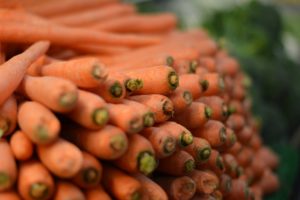 One area of food and nutrition that tends to get overlooked is food waste. According to data from the Food and Agriculture Organization of the United Nations (FAO), food losses and waste amount to roughly $680 billion in industrialized countries and $310 billion in developing countries. This means that approximately one third of the food produced in the world for human consumption every year — approximately 1.3 billion tons — gets lost or wasted.
One area of food and nutrition that tends to get overlooked is food waste. According to data from the Food and Agriculture Organization of the United Nations (FAO), food losses and waste amount to roughly $680 billion in industrialized countries and $310 billion in developing countries. This means that approximately one third of the food produced in the world for human consumption every year — approximately 1.3 billion tons — gets lost or wasted.
Fortunately, there are small steps that can be taken to help reduce waste, and there are a number of organizations that have made it their mission to ensure surplus food is no longer wasted. As we look to feed a growing population of 9.6 billion people by 2020, it begs the question – where will we find enough food to feed two more billion people? A simple step is to start by cutting back on food waste, and the organizations below have been making significant strides to do just that. As we ask ourselves what we can do to help, we should encourage our clients to consider getting more involved in the food sustainability sector. Here is a snapshot of three organizations making a difference:
TECHNOLOGY: MealConnect: In partnership with Google.org, General Mills and Walmart Foundation, Feeding America is a technology platform that makes it easy to connect donors with surplus food to their local Feeding America member food banks and their partners. Meal Connect makes it simple for businesses to stop wasting food. Business donors can access MealConnect through its website or mobile application, create a free account, upload information about donations and select a pick-up date. The donation is then matched with a partner organization (e.g. soup kitchen), determined by an algorithm. Once a match has been made, someone from the partnering organization will pick up the donation.
COMMUNITY: DC Central Kitchen: DC Central Kitchen transforms 3,000 pounds of otherwise wasted food into 5,000 healthy meals. The meals are made by hand by graduates of DC Kitchen’s Culinary Job Training program (formerly unemployed individuals) who now work for DC Kitchen full-time at living wages. These chef-crafted meals are then put onto the organizations fleet of trucks and delivered to more than 80 partner agencies in the Washington metropolitan area, including homeless shelters, rehabilitation clinics and after-school programs.
RESEARCH: Center for a Livable Future: The Center for a Livable Future, a program affiliated with Johns Hopkins University, aims to promote research and to develop and communicate information about the complex interrelationships among diet, food production, environment and human health. The goal is to advance an ecological perspective in reducing threats to the health of the public and to promote policies that protect health, the global environment and the ability to sustain life for future generations. The center seeks to partner with organizations which complement its resources and expertise in order to improve the overall food system and strengthen local and regional capacity. The center also supports and conducts interdisciplinary research through collaboration with experts in a variety of fields and educates and trains students and professionals through doctoral fellowships, graduate courses and curricula.
This is just a small sampling of the many types of organizations committed to reducing food waste, in three major areas of influence. As we face the reality of a growing population, it is important to keep the following statistics from the FAO in mind:
- If just one-fourth of the food currently lost or wasted globally could be saved, it would be enough to feed 870 million hungry people in the world.
- Every year, consumers in rich countries waste almost as much food (222 million tons) as the entire net food production of sub-Saharan Africa (230 million tons).
- Fruits and vegetables, plus roots and tubers have the highest wastage rates of any food.
As we work with food companies, Registered Dietitians, and other health care professionals, it is important to educate these relevant audiences on opportunities to make a difference.
